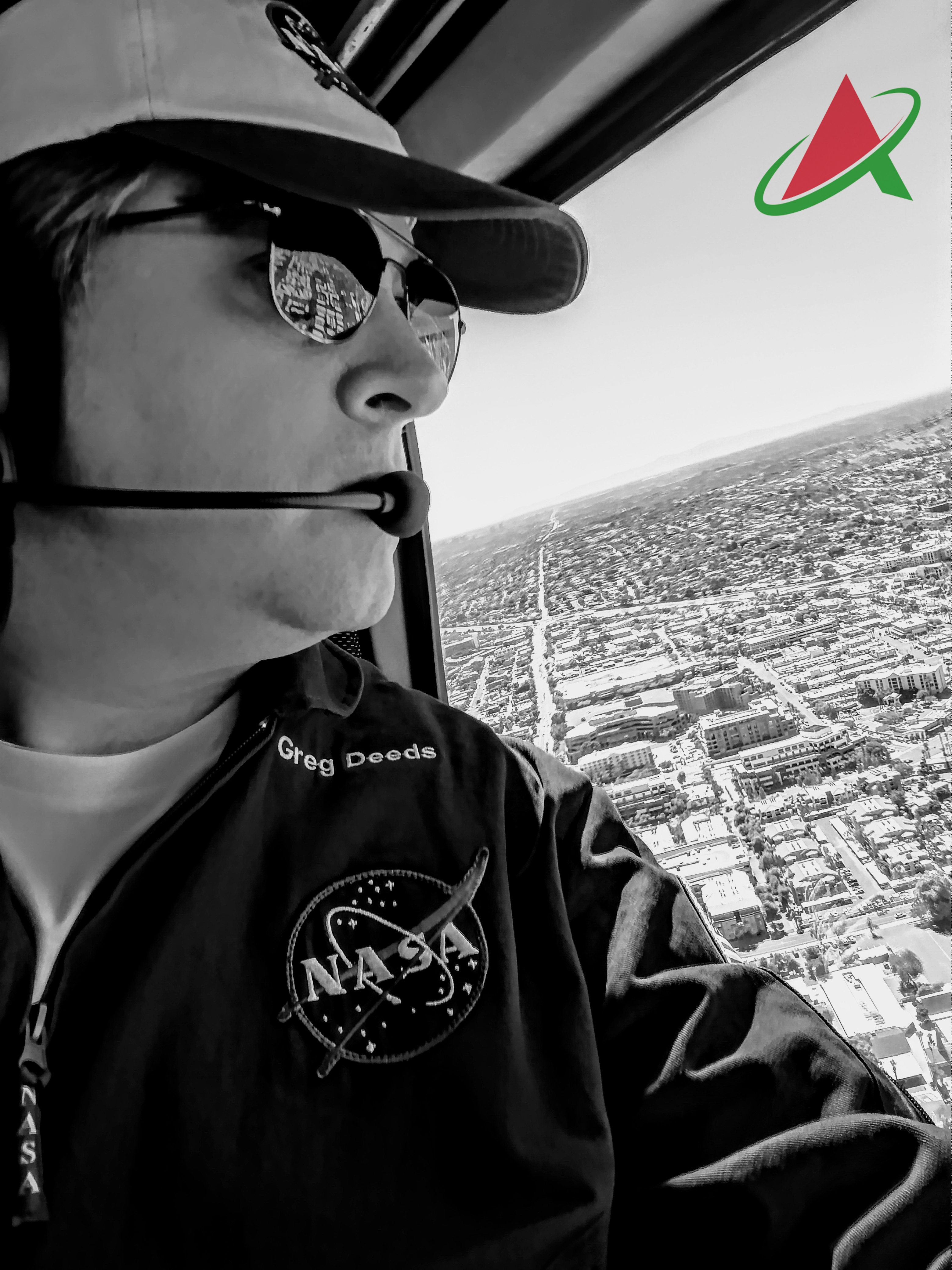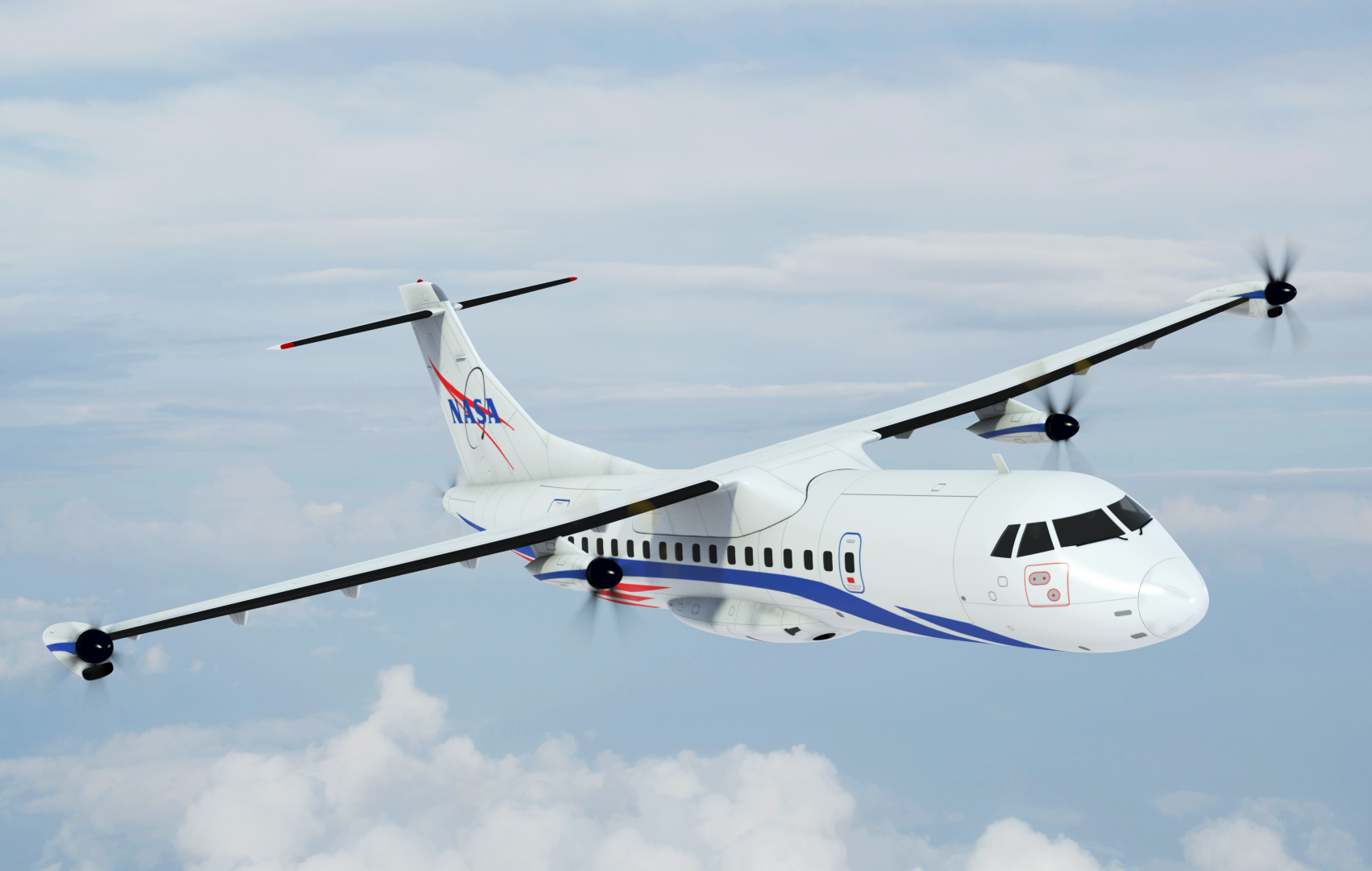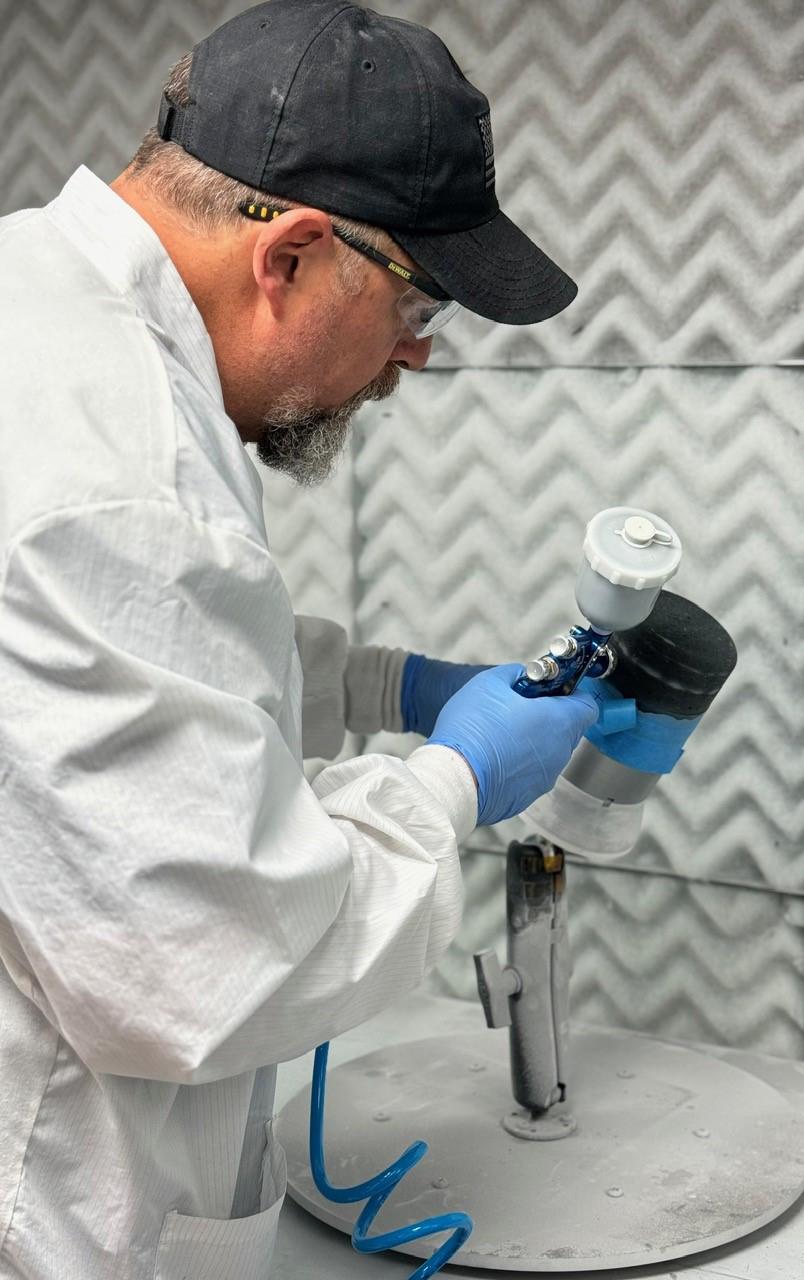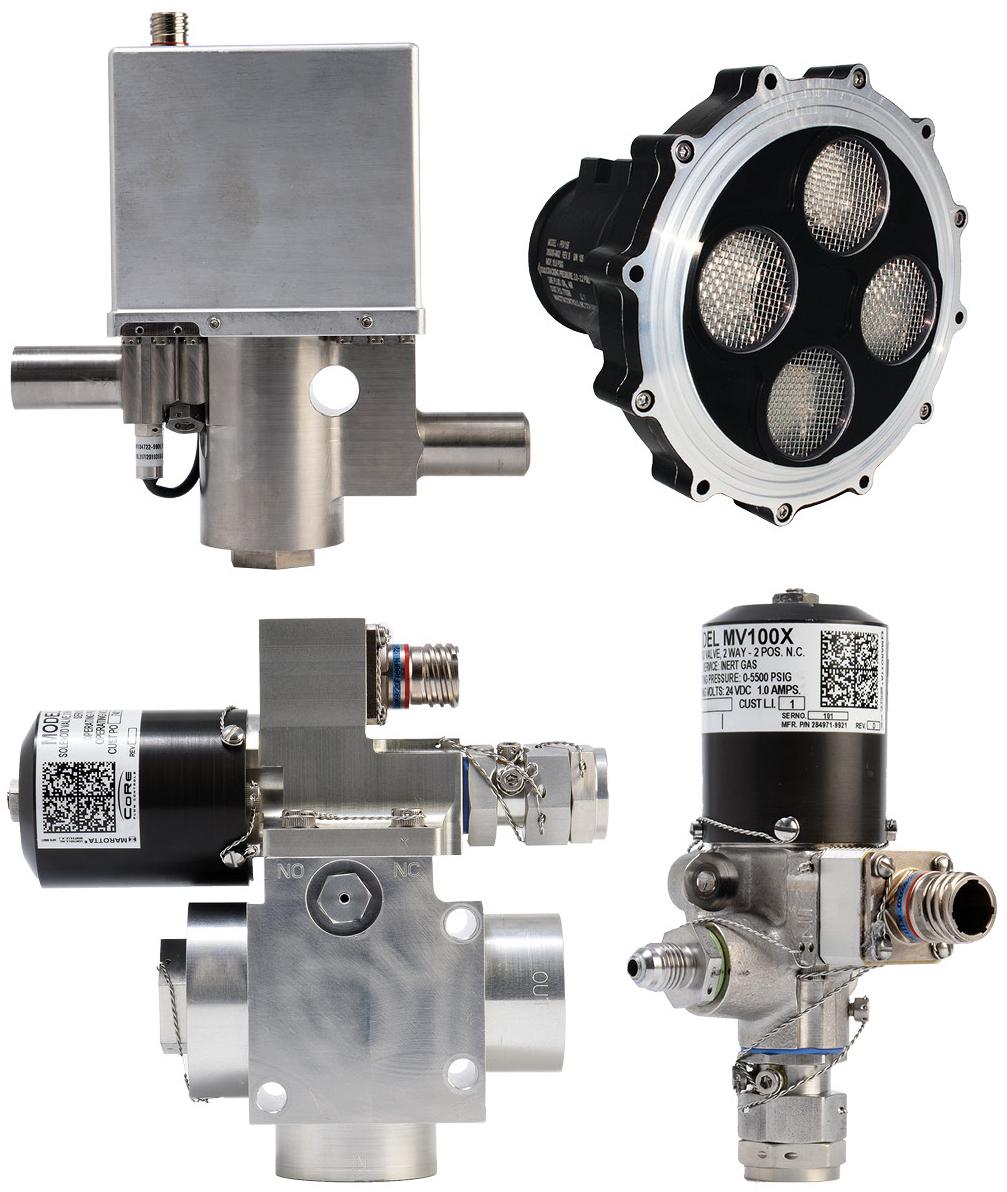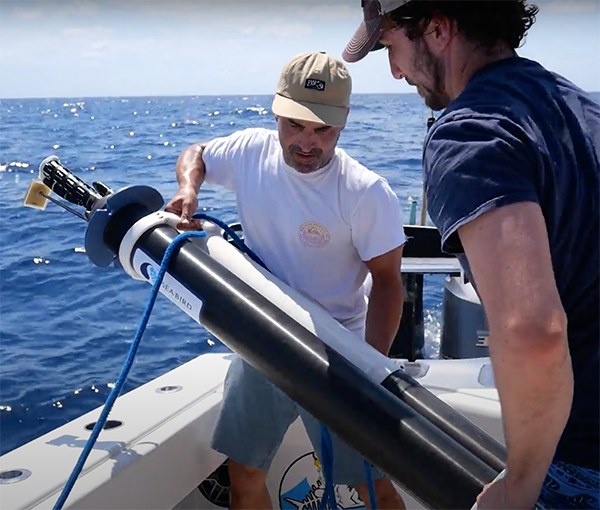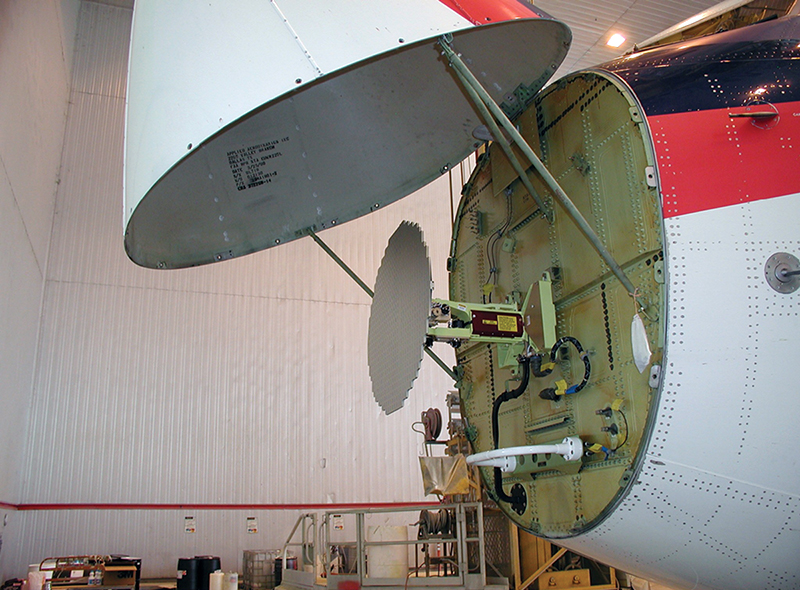
Steering Aircraft Clear of Choppy Air
Originating Technology/NASA Contribution
On December 28, 1997, a United Airlines plane flying from Japan to Hawaii experienced severe turbulence while over the West Pacific Ocean. Over 100 individuals on this flight of 374 passengers and 19 flight crew members were injured during the encounter, one fatally. Investigative reports issued following the incident indicated that the plane was subjected to a “sudden upward push of almost twice the force of gravity,” followed by a “sharp, downward push” about 6 seconds later.
In other incidents, turbulent air has ripped off airplane engines, broken wings in half, flung food carts to the ceiling, and caused broken bones in passengers and flight attendants. Whether it is an injury to a human, damage to onboard equipment, or damage to a plane itself, airlines are facing greater than $100 million in turbulence-related costs annually, according to the U.S. Department of Transportation and the Federal Aviation Administration (FAA). Moreover, NASA has found that turbulence encounters by commercial transports are the leading cause of injuries to passengers and flight crews in non-fatal airline accidents.
But what exactly is this turbulence phenomenon, and how does it occur? Turbulence is an irregular or disturbed flow in the atmosphere that produces gusts and eddies. What makes turbulence so dangerous is that it normally cannot be seen, and onboard radar systems that track weather cannot detect it—even though weather is accountable for turbulence in many instances. In fact, nearly 80 percent of all turbulence-related accidents are associated with thunderstorm activity.
It is not always the weather, though. If you are accustomed to flying the “friendly” skies, you have likely noticed that the rough and bumpy parts of a trip can often occur when the skies actually appear to be friendliest; that is, clear and blue as far as the eye can see. This type of clear-air turbulence can be attributed to jet streams, or fast, high-altitude air currents that disturb nearby air, as well as air that passes over mountains or other high obstructions. The wakes created by other nearby planes or helicopters can also stir up turbulence. Wake turbulence is more prevalent in areas where planes are taking off and landing.
A team of researchers at Langley Research Center, under the Turbulence Prediction and Warning Systems (TPAWS) project, developed two special technologies that can automatically alert pilots of potentially hazardous turbulence conditions, in real time.
The first technology, called the Enhanced Turbulence (E-Turb) Mode Radar, is software in an aircraft’s radar that can provide flight crews advance warning of turbulence, so that they can avoid it altogether and keep themselves and their passengers out of harm’s way, or, at a minimum, prepare the aircraft for it by stowing loose equipment and having passengers and crew seated with seatbelts fastened.
“The radar technology is an enhanced turbulence-detection radar system that detects atmospheric turbulence by measuring the motions of the moisture in the air,” said NASA’s TPAWS project manager, Jim Watson. “It is a software signal-processing upgrade to existing predictive Doppler wind shear systems that are already on airplanes.”
The second technology, known as the Turbulence Auto-PIREP System (“PIREP” is a term used in the aviation industry for pilot reports), or TAPS, is software that improves situational awareness of the location and severity of actual turbulence encounters for pilots, dispatchers, and controllers. If a TAPS-equipped aircraft encounters turbulence that exceeds the designated turbulence threshold, the onboard TAPS software will generate a turbulence report that is then broadcast over a data link. The report is received by ground stations, where it is automatically shown on a display, accessible via the Internet by dispatchers, controllers, airline operations personnel, and maintenance crews. Various functions allow the ground station display users to process and tailor the information for specific users. If there are any other aircraft on course to approach the region where the turbulence was reported, then the ground station can directly uplink the TAPS report packet to them.
The E-Turb Mode Radar and TAPS developmental efforts were carried out as part of NASA’s Aviation Safety and Security Program, which has tapped into decades of aeronautics research to make commercial air travel more secure. The goal is to reduce the number of turbulence-related accidents 50 percent by 2007.
Partnership
AeroTech Research (U.S.A.), Inc., a leader in turbulence-detection and warning systems, has been involved with NASA Aviation Safety research since 1998. AeroTech served as a contractor for the TPAWS government/industry development project, and was funded by NASA to develop the E-Turb Mode Radar algorithms and the TAPS software. (Other contributors to this project include the National Center for Atmospheric Research, the FAA, North Carolina State University, and the Research Triangle Institute.)
The radar algorithms combine an aircraft’s turbulence-response characteristics with radar measurements to determine the predicted turbulence loads the aircraft will experience, and present this information to the pilot. The TAPS software monitors and processes onboard aircraft sensor data; generates automatic reports when an aircraft encounters turbulence and a set turbulence threshold is exceeded; and then displays the reports and underlying information to ground personnel to improve situational awareness of the location and the severity of the turbulence encounter.
Once the E-Turb Mode Radar and TAPS were developed, AeroTech helped NASA perform the initial flight testing of the technologies. For this, the systems were implemented on NASA’s B-757 research aircraft. Upon installation, the B-757 was flown through regions of significant turbulence, caused by thunderstorms. The actual flight data gathered allowed NASA and AeroTech to fully evaluate the systems’ performances and then optimize the technologies to ensure they were ready for commercial application.
NASA and AeroTech began an in-service evaluation of the TPAWS in concert with Delta Air Lines to evaluate the effectiveness of TPAWS to a wider variety of turbulence experienced in operational conditions.
The E-Turb radar software was integrated into a Rockwell Collins WXR-2100 radar, which was installed on a Delta Boeing 737-800 aircraft and has been flying in revenue operations for over 2 years. The TAPS software was implemented on a total of 123 Delta Boeing 737-800, 767-300ER, and 767-400ER aircraft, and has also been flying in revenue operations for over 2 years. TAPS was additionally integrated into a ground station graphical display system, where turbulence reports generated by TAPS-equipped Delta aircraft have been viewed and used by Delta dispatch, operations, flight safety, management, and maintenance personnel since August 2005.
Product Outcome
AeroTech’s versions of these airborne turbulence technologies are being implemented into commercial systems. The E-Turb radar algorithms are being developed for different aircraft types and for incorporation in new radars. A retrofit option for existing radars is also under consideration. This would allow the maximum number of aircraft to take advantage of the new, enhanced turbulence radar-detection capabilities. The FAA is currently developing minimum performance standards for airborne weather radar with turbulence-detection algorithms.
TAPS, meanwhile, continues to fly on the Delta aircraft. Additional airlines have shown interest in participating in the effort and, hence, sharing TAPS reports.
Besides improved in-flight safety measures, TAPS also enables more judicious use of airspace and can lead to potential savings in fuel and reductions in flight delays. The technology can also assist meteorologists in validating and enhancing weather forecasts.
“With these [TAPS] tools, we’ll have better knowledge of where turbulence is, and we won’t cry wolf as much,” said Bill Watts, Delta Air Lines’ Turbulence Program manager. “We can get people to sit down when they need to sit down.”
In its current format, however, TAPS information can only be sent to the cockpit and received by airborne crews via text and voice messages from dispatchers. AeroTech was awarded a NASA Small Business Innovation Research (SBIR) contract to carry out this work, and will continue to collaborate with various industry groups to ensure that the turbulence technology reaches its potential.
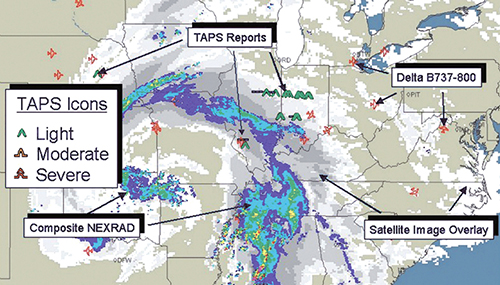
Screen shot of a ground station display showing a storm system over the central United States. The colored areas represent radar reflectivity. Also shown are various aircraft in the area and the TAPS reports made by TAPS-equipped transiting aircraft.

Installation of the E-Turb radar, a modified radar unit that can detect turbulence associated with thunderstorms by measuring the motions of the moisture in the air.




